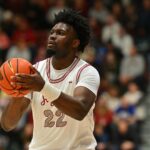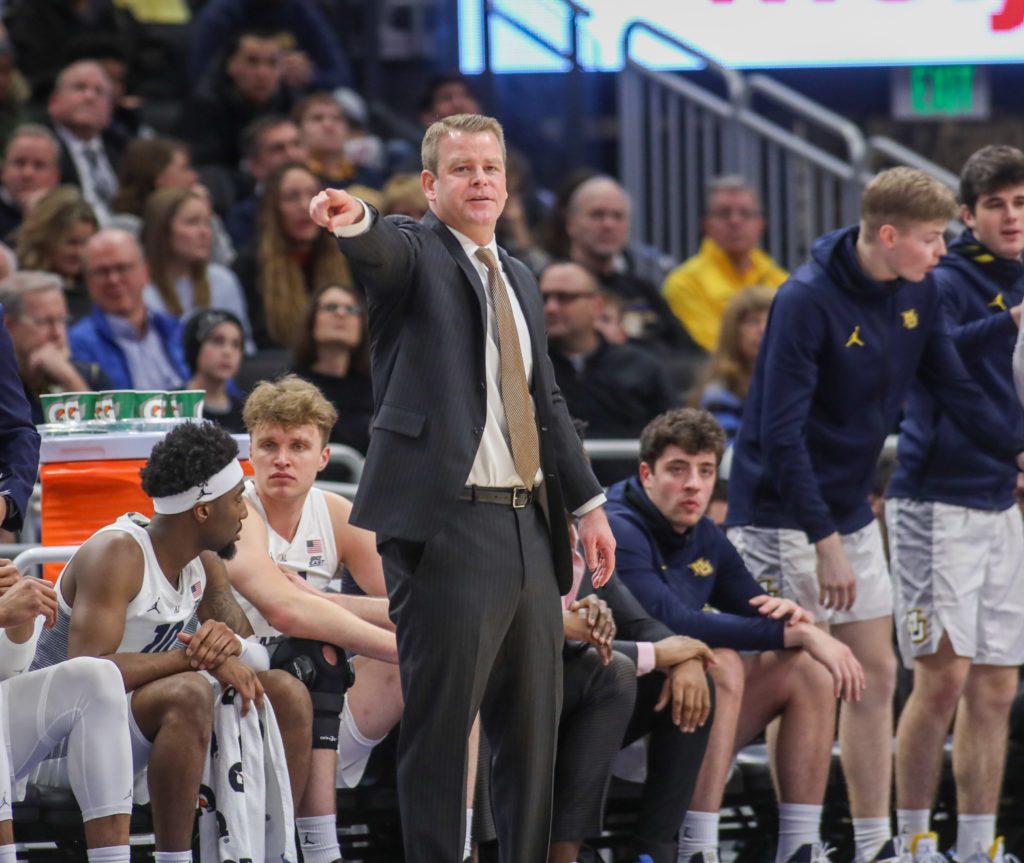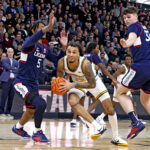



Photo courtesy Marquette Athletics
By KEVIN McNAMARA
It won’t be easy.
That’s the clear, overwhelming message from college basketball coaches with the start of this potentially bizarre, broken or even ship-wrecked season just inside a month away from tipping off.
Jay Wright and Steve Wojciechowski know all about these challenges. They have nothing to do with their point guards or power forwards. They have everything to do with, unfortunately, the pandemic.
While the pro sports found ways to fight through this crazy time and college football keeps bumping its way towards Bowl Season, college basketball can’t catch a break. The virus exploded last March, costing everyone their annual taste of March Madness. Now the 2020-21 season is set and COVID-19 cases are zooming once again.
Wright welcomed his Villanova team back to campus in late August but within weeks an undisclosed number of players tested positive. He shut the program down for nearly three weeks. Wojciechowski is in a tougher spot. Just as practice officially began, one of his players and one from the women’s team tested positive. While the rest of the country whips into shape, the Golden Eagles are back doing Zoom meetings.
Wojo: ‘The COVId positive test was, frankly, confusing.’ pic.twitter.com/BQC86Fo5t7
— Kevin McNamara (@KevinMcNamara33) October 28, 2020
“Our guys have been incredibly responsible. We’ve tested our guys like crazy. We’re talking about an outlier situation. We’re not talking about the norm,” Wojo said when asked how his team fell victim to the virus. “We have talked about being socially responsible and our guys have done that at an incredibly high level. That’s why the COVID positive test was confusing, to be quite frank with you. I’m not sure if our guys could be doing anything more than what they are doing.”
Here’s what fans need to know about the virus. Under current NCAA guidelines, the CDC is recommending teams with a positive test shut things down for 14 days before holding another meeting, practice, or anything in a group setting.
That’s where things get hairy – and even political. Some conferences, like the Big Ten, have adopted their own protocols that avoid a complete shutdown if someone tests positive. They focus on the individual player, not the entire program.
“The challenge becomes in not all conferences are following the NCAA guidelines. We are as the Big East. But not all conferences,” Wojciechowski said. “Because we are it makes things a lot more complicated so we have to be prepared for a number of different alternatives.”
If it sounds like your testing crew and team doctor may be more important than your shooting guard you’re starting to get the picture. Remaining crystal clean is the number one priority of every program in college basketball. If someone gets infected, the 14-day goes into effect at most schools in the country.
“You’re out 14 days but then you have to get your heart tested and need those results back before you can practice, so it’s more like 23 days,” ‘Nova’s Wright said. “Then in our case we had four major injuries when we came back due to guys being out for 23 days.”
Jay Wright says 14-day quarantine is a constant concern pic.twitter.com/O8gAlyjfTb
— Kevin McNamara (@KevinMcNamara33) October 28, 2020
NCAA basketball chief Dan Gavitt told CollegeHoopsToday Thursday that the 14-day quarantine is constantly being evaluated and that “we’re hopeful that may evolve during the season. I don’t anticipate there’s going to be a change before the season begins.”
Wojciechowski wonder that if the 14-days don’t change will a start-and-stop college basketball season find its way to March?
“The one thing I want to clarify is it’s not an NCAA mandate. It’s an NCAA guideline, that’s what they recommend. That walks in concert with what the CDC recommends,” Wojo said.
Conferences everywhere are trying to manipulate their schedules to buy time around the rise in COVID-19 cases and leave some cushions in January and February for likely makeup games.
“The one positive test and 14-day quarantine is a challenge, there’s no question about that,” Wojciechowski said. “There are going to be outbreaks across the country and across our league. That’s why we as a league, if we’re going to continue to follow the NCAA guidelines, we have to be prepared for alternate ways to get a conference season in.”
The most prominent alternative that’s emerging in the Big East is a bubble scenario for all, or part, of the 11 teams. The league is eying a Jan. 3-17 window to hold games in a bubble format where teams are sequestered in one city or dedicated basketball facility.
Wright pointed out that if his team goes to a bubble, the Big East’s women’s teams may have to as well. He questions the costs of such a set-up and says maybe just an end-of-the-season bubble to get to the NCAA’s 13-game minimum would work. Or one to hold the Big East Tournament, if that’s even deemed to be needed.
The NCAA is clearly weighing the idea of holding its marquee event in a bubble format. The eight first-and-second round cities, plus those that host the Regionals and the Final Four in Indianapolis could turn into bubbles like the NBA enjoyed at Disney World.
“So it’s going to be really difficult,” Wright said. “It’s how you handle that during the season that’s going to dictate your season. There are going to be great challenges and we all just have to accept that.”











